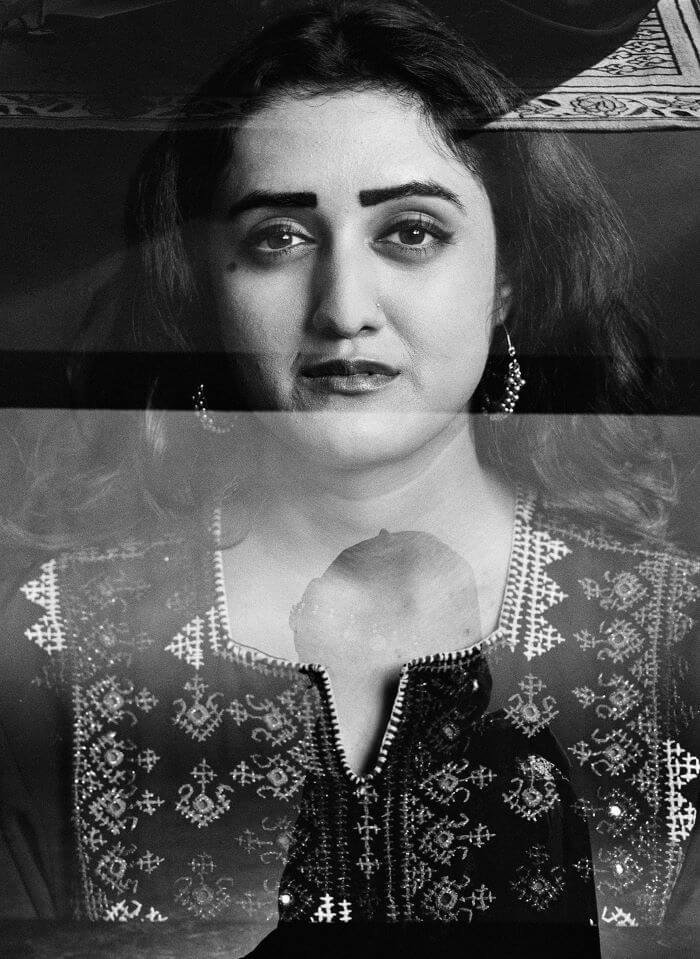
Collection of the artist. Courtesy the artist and Sutton Gallery, Melbourne
For three decades the Monash Gallery of Art (MGA) has nurtured strong and meaningful relationships between artists and the local community while fostering support of artistic enquiry and contemporary art practice in the field of photography. To celebrate the institution’s 30-year anniversary the MGA invited Australian artists Peta Clancy, Lee Grant, Ponch Hawkes and David Rosetzky, to create a portrait of the City of Monash.
Curated by MGA Gallery Director, Anouska Phizacklea four newly commissioned works are currently on show in ‘Portrait of Monash: the ties that bind’. Here the artists respond with stories of migrant life, homelessness, personal accounts of being part of the LGBTQIA+ community, and an exploration of local and significant Indigenous sites.
“The commission provides a powerful platform for people to share their stories, which builds awareness of the individual’s experience as they present their truth and the challenges they face. In doing so MGA becomes a safe place for respectful discourse which leads to greater understanding, profile and advocacy. This is the transformative power of the arts at its most potent,” says Phizacklea.

The artists
Melbourne-based multi-disciplinary artist Peta Clancy is a descendant of the Bangerang people from the Murray Goulburn area in south-eastern Australia. For Clancy’s commission ‘Undercurrents’, a series of photographs document her research of the Dandenong Creek, and the waterways and other significant sites on Country of Baluk willam of the Woi wurrung and the Nguruk willam of the Boon wurrung.
“The starting point for the project is a map on page 37 in The land of the Kulin (1985) by Gary Presland illuminating the cultural and environmental significance of the area prior to settlement. A hand-drawn line meandering through the map indicates the Dandenong Creek. Today Dandenong creek follows the same trajectory as it did prior to settlement. The creek begins in the Dandenong Ranges, traverses through the City of Monash and runs into what was Carrum Swamp, which has now been drained. Creeks and waterways were significant, and still are, to Boon Wurrung and Woi wurrung people as they traversed their estate,” says Clancy.
Lee Grant is a multi-disciplinary documentarian with a background in social anthropology and is based on the NSW South Coast. Her practice explores themes of community, identity and belonging and looks at how natural and inhabited landscapes relate, using a combination of photography, video, sound and text.
“Whilst I am not a local of the Monash region, I learned through this commission that Monash represents a microcosm of Australia’s broader migrant communities. I could have been in the suburbs of Canberra or Sydney or even Brisbane and the same themes of cross-cultural adaptation and sense of community were very apparent,” Grant shares.
Melbourne-based Ponch Hawkes is a photographic artist who since the 1970s, has been documenting Australian society and cultural life across themes of the body and movement, the environment, community and relationships, from a feminist perspective. For ‘Flesh after fifty’, Hawkes is photographing a phenomenal 500 women (in the nude) aiming to draw community awareness to the reality of homelessness among women.
“There are more and more homeless women and children in our community. They are sleeping in our spare rooms, couch-surfing and in cars, caravans and boarding houses. Sometimes we see them sleeping rough,” says Hawkes.
David Rosetzky is a Melbourne-based artist working with photography and
video. Often drawing inspiration from the visual language of fashion,
advertising and cinema, Rosetzky brings our focus to notions of identity,
subjectivity and interpersonal relationships. For ‘Portrait of Monash’ he has
produced a series of black and white double-exposure portrait photographs and a
two-channel video installation, which collates diverse views of people who identify
with the LGBTQIA+ community.
Rosetzky’s hope for this commission is to “convey the strength, vulnerability,
and resilience of this group of people from the Monash LGBTQIA+ community.”
More about MGA, Australia’s home of photography
The MGA is located on beautiful parkland at Wheeler’s Hill overlooking the Dandenong Ranges in south-east Melbourne. Backdropped by Harry Seidler’s architecture the magnificent location affords the gallery, space for an outdoor sculpture park. Indoors the gallery presents four major exhibitions throughout the year, public events including talks, tours and concerts, the William and Winifred Bowness Photography Prize for excellence in photography, and the permanent collection of approximately 3,400 photographic works.
If you’d like to receive a occasional Free email with more content like this, then sign up today!